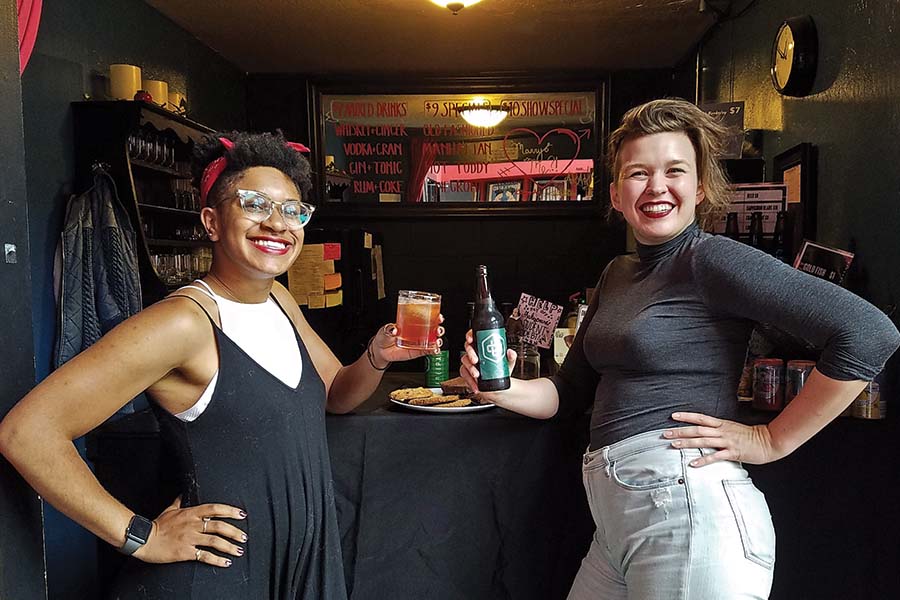How can you make your concession stand really stand out? From a small theatre without much space and no ovens to an 11,000-seat behemoth, there’s one Golden Rule: The food and drink should enhance the theatre experience. “We don’t even use the word concessions,” says Jay McAdams, executive director for 24th Street Theatre in Los Angeles. “We see it as part of the show.” From specialty cocktails to local purveyors, here are some tips to make the concessions part of the show.
Local sourcing. Want to convey that your theatre is part of a community? Look close to home. Shotgun Players in Berkeley is known for its fantastic baked goods, which all come from Sweet Adeline Bakery just down the street. Even larger companies are making similar moves. Sweet Hospitality Group—a New York-based concession and catering company which does concessions for Lincoln Center, Disney Theatre Group, and Studio 54, among others—began catering the Williamstown Theatre Festival using all locally sourced products. This not only pleased patrons, says Sweet Hospitality president Julie Rose, the theatre itself was “extremely happy to see that people they know in the community were getting shout-outs.”
A sense of welcome. “When I started—and this was almost 33 years ago—I spent $500 on housewares,” says Sweet Hospitality’s Rose. “That was my investment in the company, and it got people over there to the bar because it was attractive.” It’s not about creating a flashy display, necessarily, but details can make all the difference: where you place things, for instance, and good signage. One tip from Rose: Make sure all the candy labels go the same direction. “It just looks nicer,” Rose says.
Signage. Amy Langer, box office manager of Shotgun Players, recommends having a large sign over concessions that lets people know what’s on offer. It makes the line move faster, because people know what they want when they get to the counter. Langer calls it “the Disneyland thing. Having things to look at in line before you get to the counter is a wonderful way to make sure people aren’t just sighing and checking their watches.”
Upselling. Sweet Hospitality’s approach to concessions is to “raise the per capita,” meaning the amount of money they earn per person present, not the number of folks who visit concessions. (If they make $1,000 one night at a filled 100-seat theatre, they call that $10 per capita, even if not all 100 patrons bought food or drink.) Stands can raise per capita by raising prices on individual items, but also upsell, offering patrons a double at a higher price, but lower than it would be to order two drinks. Another tip: When people order a drink during the pre-show lobby hours, offer them the chance to pre-order a round of drinks for intermission.
Efficiency. Another way to raise that per capita is to serve more people. “It’s about precision,” says Retta Berberich, director of food and beverage at the Muny, an 11,000-seat theatre in St. Louis. “We’ve got a 45-minute walk in and a 15- to 20-minute intermission. So it’s really about what kind of items you can sell that you can simply hand the person.” Langer agrees, recommending a small but diverse menu, enough that people with dietary restrictions, say, can find something, but not so overwhelming or complicated that it slows down the line, either from indecision or confusion.
Noiselessness. Concessionaires have to make sure that their food and drinks (if they’re allowed into the theatre) are as quiet as possible. This includes small things like only serving crushed ice, reducing packaging as far as possible, and not selling anything that is loud when chewed (like potato chips).
Tie-ins. At every 24th Street Theatre show, there’s free food, with treats related to the show onstage. As McAdams puts it, “We decide as a production team what the food will be, the same way we decide about lighting and costumes and everything.” Michael DeMono, who designs specialty cocktails for Sweet Hospitality Group, reviews the script and artwork for each production, and talks with the production staff to make sure his creations jibe with the theatre experience they’re trying to create. “We’re there to enhance, not do what we want to do no matter what,” he says. (Some choice examples: For Mean Girls, a butterscotch appletini called “Is Butter a Carb?” and a spicy margarita called “Burn Book”; for Travesties the Joyce Julep, a whiskey drink with cucumber, lime juice, and ginger beer.)
Fun. Like it or not, concessions are a fixture of the theatregoing experience, and your approach to them says something about your theatre. “It’s an opportunity to show the heart or ethos of your theatre and have some fun with it,” says Langer. “It’s always a little bit of a wink and nudge to our audience, and it communicates what we feel strongly about in our theatre: having fun with our shows and never taking things too seriously. At least in the concession stand.”


